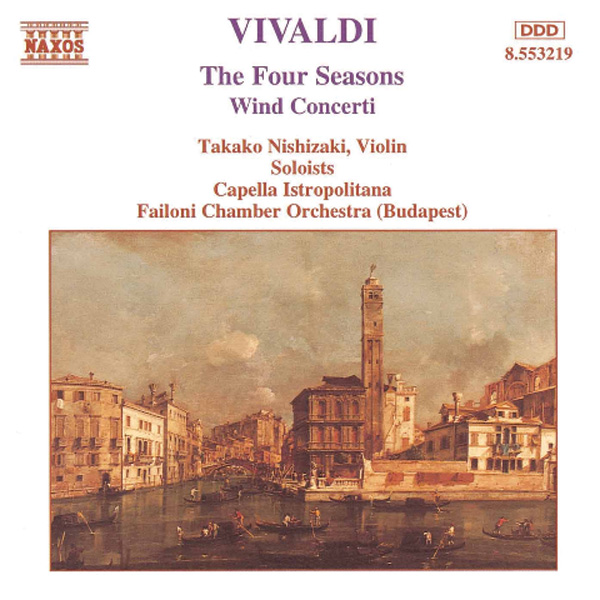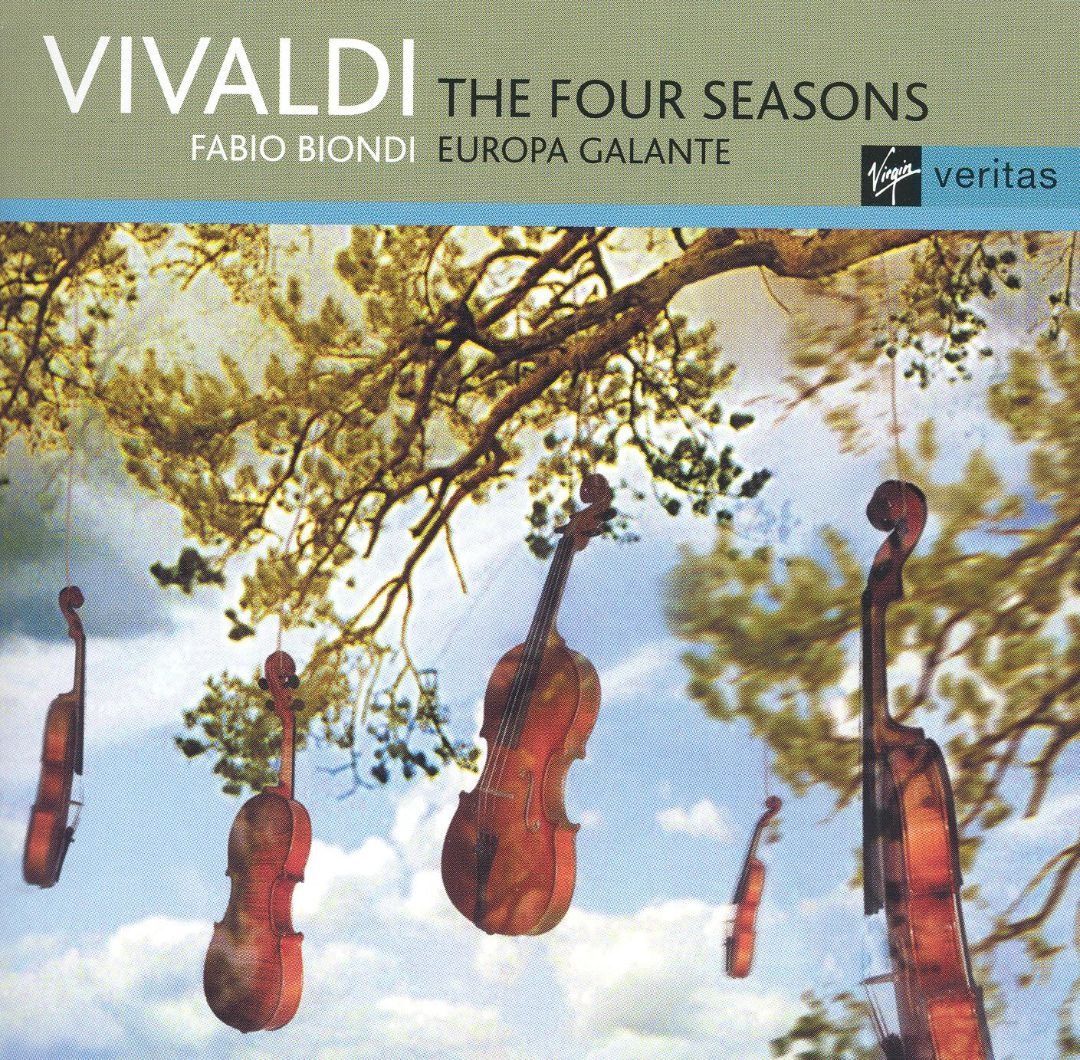Antonio Vivaldi
- Antonio Vivaldi The Four Seasons Facts
- Antonio Vivaldi The Four Seasons Autumn
- Antonio Vivaldi The Four Seasons Videos
The Four Seasons. Violin concertos by Antonio Vivaldi composed at the beginning of the XVIII century.No copyright infringement intended. The rights of this s. A very pleasant and soothing 41-minute panorama then, whose main shortcoming is that, limited to the Four Seasons, it is way too short. Check out the recording's original CD reissue, from 1987, for best price, Vivaldi The Four Seasons. I wonder how The Seasons would sound played on mandolins. Probably even better, and more genuinely Venetian.
The Four Seasons

Born in Venice, Italy, March 4, 1678; died in Vienna, Austria, July 28, 1741
So popular is Vivaldi's The Four Seasons today that it seems incomprehensible that these four delightful concertos should have languished in the musical attic for more than 200 years before re-appearing around 1950, just in time for the invention of the long-playing record. For it was the LP that spread the Seasons' fame throughout the world, making it probably the most recorded classical work of them all.
How Vivaldi would have loved all those royalties! After a long and illustrious career in which he composed some 800 works — including 500 concertos for virtually every instrument extant in his time, as well as operas and church music — he died a pauper in 1741 in Vienna, far from his native Venice. But in his prime, he was a celebrated violin virtuoso, and his dynamic concertos influenced many other contemporary composers, including J. S. Bach.
By the 1720s, Vivaldi was devoting some of his time to the service of Count Wenzeslaus von Morzin of Bohemia. In 1725, he dedicated a remarkable new publication of 12 concertos, entitled Ilcimento dell'armonia e dell'invenzione ('The Trial of Harmony and Invention'), to the Count — the first four of these concertos being TheFour Seasons. But scholars believe the Seasons were actually composed a few years earlier, probably around 1720, making them contemporaries of Bach's Brandenburg Concertos.
Although Vivaldi had written other concertos with colorful titles, the Seasons took descriptive writing several steps farther by graphically illustrating four sonnets, possibly written by Vivaldi himself, which are included in the original printed edition. Moreover, Vivaldi added verbal cues in the scores so performers would know exactly what they were representing: whether a barking dog in the second movement of “Spring” or a drunkard wobbling through the first movement of “Autumn.”
Here are a few highlights to listen for in each concerto.
“Spring” (E Major) is viewed, along with “Autumn,” as a benign season in which Mother Nature brings unclouded happiness to humankind. Its opening movement features enchanting birdsong for the soloist and two other solo violins. According to the accompanying sonnet, the slow movement describes a goatherd slumbering in the fields; listen for the “woof-woof” of his watchful dog in the violas. The final Allegro is a pastoral bagpipe dance in a rustic meter with the lower strings providing the drone.
In G minor, “Summer” is the most threatening of the seasons. Its imaginative opening movement is a portrait of summer's breathless heat, with rumbles of a thunderstorm in the distance. The soloist imitates the rapid song of the cuckoo and later the turtledove and goldfinch. We hear the background buzz of insects in the slow movement as the peasant sleeps restlessly, fearing the coming storm that might damage his crops. In the last movement, the storm finally breaks with all the fury Vivaldi could muster from his small ensemble.
The bountiful harvests of “Autumn” (in the traditional hunting-horn key of F Major) are celebrated by a sober peasant-dance ritornello in the first movement. But the soloist has drunk far too much, and his inebriated antics provide delightful virtuoso opportunities. Vivaldi wrote in the slow movement's score that this is the sleep of the drunken revelers; the harpsichord takes the foreground over muted strings. The most fascinating movement is the last: a detailed scenario of an autumn hunt with the horses' stately prancing, the baying dogs, rattling gunfire, and the soloist as the fleeing stag, who dies just before the final ritornello.
In F minor, “Winter” is another menacing season. Vivaldi may be recalling here the terrible winter of 1708–9 when Venice's lagoon froze over. In an extraordinary opening movement, the chattering instruments enter one by one, piling up harsh dissonances to evoke the bitter cold. By contrast, the slow movement in warm E-flat Major conjures up the cozy atmosphere indoors by the fire, with the pattering raindrops outside imitated by plucked violins. The final Allegro describes people walking slowly on the ice, then quickly with frequent falls. As the string winds blow, the music reminds us that winter also brings pleasure as well as discomfort.
Notes by Janet E. Bedell copyright 2018
Reading Time: 3minutesAntonio Vivaldi The Four Seasons Facts
The Four Seasons, the most popular Baroque music in history, was composed by Antonio Vivaldi in 1723. He was an Italian Baroque composer who was born in 1678 in Venice. He is known mainly for composing instrumental concertos, especially for the violin. While I was researching The Four seasons, the beautiful melody and themes entranced me. He seemed to express the characteristics of four seasons.
Each season has specific theme as it goes as along with four sonnets, which makes his music classified as program music (music that intends to evoke something extra musical). There is a theory that Vivaldi wrote music with sonnets and given that each sonnet; spring, summer, fall or winter, is broken down into three sections. Each movement has slow movement between two faster ones which is pretty obcious if you listen carefuly.
[youtube l-dYNttdgl0]The first movement, which is called spring, starts with the song and dance of the birds. But then suddenly, tension is created as if there’s a thunder-storm from the sky nominated for the spring (music 3:30). The bird’s song and dance continues after it stops. Then the music slows down into Largo. In this section, the music created is a more curious and mysterious mood. The melody seems softer and calmer and there is less tension, according to slow movement. Then it turns faster again into Allegro as if the shepherd who was asleep suddenly awakes and dances. (music 5:30)
[youtube 8BsBbtp4gW4]
:format(jpeg):mode_rgb():quality(40)/discogs-images/R-7088409-1433441597-2416.jpeg.jpg)
The next movement is summer. The start of this section is slow but has high tension according to summer’s hot weather which express that the people and the animals are all exhausted under the sun. When the tension suddenly changes as the music goes faster, it shows that the birds are crying and the wind is blowing because of the summer storm. Then the music turns into Adagio which presents the fear of mosquitoes after the storm is gone(music 5:27). Then the last section of the summer is the speed of presto which is pretty fast to express the violence of the supper. (music 7:38)
[youtube QOSg7LFgt6Y]The third movement, Fall, starts with peaceful melody as all the villagers are having a party to celebrate the fruitful year. The tension is getting higher as people get drunk. But suddenly it slows down into calm because the people are all invited to fall asleep. (music 2:23-3:10) However all of a sudden, the music suddenly changes speed as if people are awake in the morning and hunters are go hunting with their dogs and chasing the animals. (music 8:00)
Antonio Vivaldi The Four Seasons Autumn
[youtube nGdFHJXciAQ]In the last movement of the four seasons, winter, the music starts with high tension from the beginning as if the people are trembling in the cold snow (like us this week..!) Since the winter is the most dangerous season in the year, it creates the most interesting melody in this music. On the first section, Vivaldi shows that the cold wind is blowing and people are stamping their feet from the cold and shivering. In the middle, the music shows that people are having a nice time beside the stove with beautiful violin melody. (music 3:10) Then the speed changes as usual like the people are walking on the ice with caution and a violent wind is coming through the chink of the door.(music 5:50)
Antonio Vivaldi The Four Seasons Videos
Enjoy =D
